I think the idea of smoking a brisket is one of the more intimidating aspects of cooking in the smoke. While there are many cooks who think nothing of cooking a pork butt or some racks of ribs to be something of a natural and easy task, the brisket often stands apart was the intimidating cut of yore. Only brisket masters need apply blah, blah, blah... As is often the case, the truth is, the same principles apply to either and any meat you are cooking.
Here then, is subject one, what is known as a packer brisket, fresh from the cryo-vac. This was an IBP brand, select grade, whole packer (with a poorly butchered point), original weight around 14.9 pounds.
Fat Cap Up, Untrimmed
Fat Cap Down, Untrimmed
Step one for me, with any cut of meat, is to thoroughly wash and scrape the meat. The idea is to wash the liquid that seeps from the meat while it in the plastic, also, scraping will remove any bone dust or chips. From here, I shake off any excess liquid, and using a clean dish towel, wipe the meat dry. Meanwhile, I like to put a layer of two of butcher paper down, and get the knives ready.
Knives
I use three knives, a small caping knife, for detailed cuts, more than anything, this knife has become like an attachment to my hand, I can use this knife for all manner of cleaning cuts. The large Scimitar is a favorite for cutting and slicing large cuts of meat. I use it with a push cut, allowing the large up-swept blade to slice through the meat, think the bow of a ship, used in this manner, a Scimitar or Butcher's knife will effortlessly slice through the thickest meat. It is not a great pull-cut blade. The small stiff-blade boning knife is what I use to clean fat and membrane, I find this knife to be invaluable for preparing all types of meat for cooking. Onto the meat.
Flop!
I like briskets that bend, this one bends nicely. If you're thinking the meat is so long and flat, it has to, nope. This brisket had a flat that was almost 3 inches thick. The point was poorly sliced and almost 1/3 of it was missing. I check each packer in the store, looking for one that is flexible, even floppy. Even though these are Select grade, I know I can turn a brisket like this into good eating. I like to trim the underside first, no reason, just do it that way. I try to remove the membrane, any fat and the wedge of fat between the point and flat. Not everyone believe this is a good practice, but, I feel the wedge of fat makes for greasier meat, adds no additional food to eat and changes how the heat interacts with the meat where the point and flat meat.
Trimmed
Here, you can see the brisket, lean side trimmed, most of the surface fat has been trimmed, the wedge of fat removed, edges cleaned up. I stretched the brisket out a bit, to show the flat, on the left of the image, and the point, on the right of the image. One additional thing to note, I have shaped and trimmed the edges of the brisket to a thicker edge, most packers have very thin edges, these are hard to get cooked correctly and leave the edges dry. By blocking or rounding the flats edges, I get a better overall texture. Next!
Fat Cap, trimmed
The above image, which shows the poorly cut point in all of it's glory, also shows that the entire fat cap has been trimmed, down to no more than 1/4". I know it looks like it is down to membrane, but, once cooked, that will leave a thin cap of fat, just enough to moisten the bite. Now, I would note, that this brisket was intended for the table, so I did minimal trimming of lean, just removing the discolored meat. For a competition, I would trim the flat to a width of around 10" with the grain, to try and get the slices to fit into a 9" clam shell. Oh, and there was a second...
No fat cap shot, look at the marbling
Again, you can see the overall clean trim of the flat and just a little surface fat left on the point, which shows that there is still a fair amount of marbling, even in a select packer. As you can see, this packer had a very full point, which is something I consider to be a desirable trait in a brisket. Much of the flat on this packer was protected by that large point, it made positioning over the fire easier. I think the flat ends up more tender, and with more moisture as a result.
All of this trimming is really just to take a good piece of meat and make it easier to cook. Learning how to pick out a good packer, learning which kind of cut you want and how to prepare it are more important, but, preparing a brisket this way, leaves you with more edible meat, with a lot of surface and minimal surface fat.


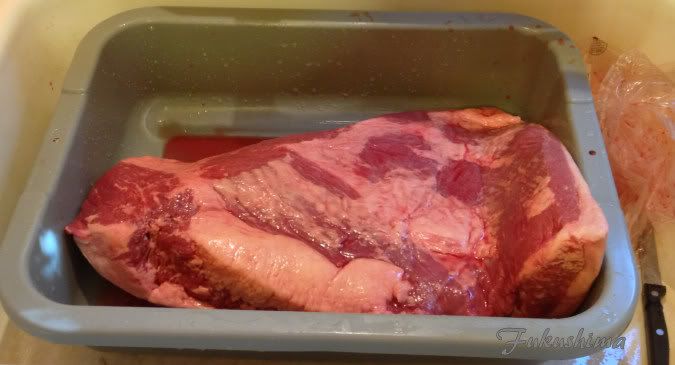

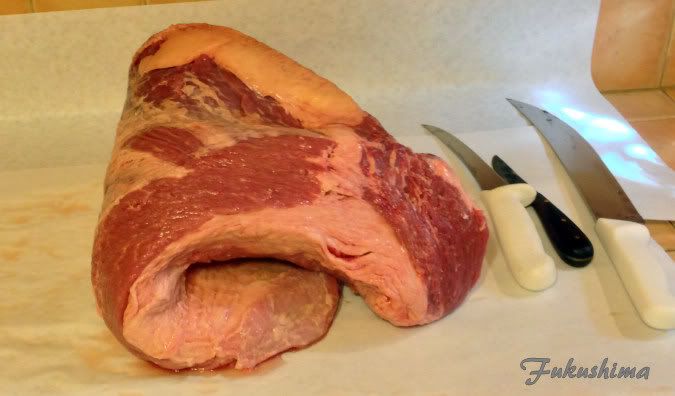
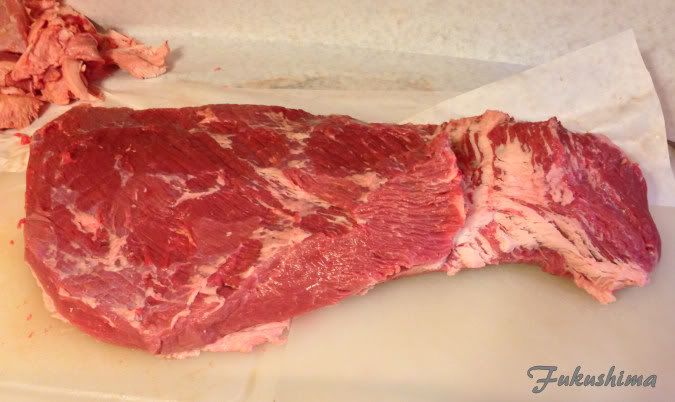
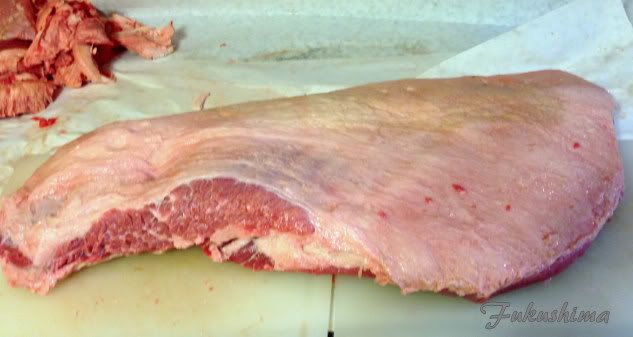
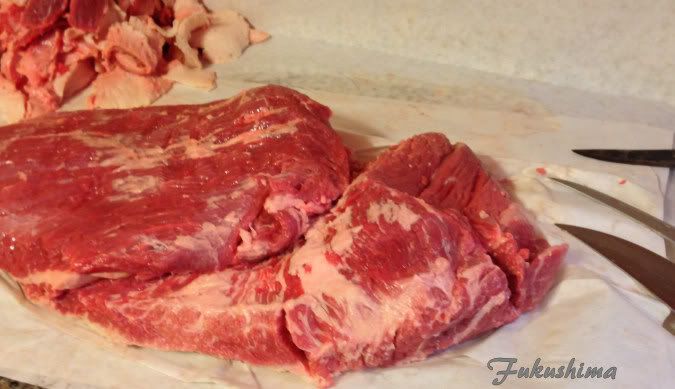
I've started trimming my brisket more aggressively in the past two years than I had in the past. I use my boning knife the most, just a cheap one from Bakers and Chefs (Sams brand, I believe).
ReplyDelete